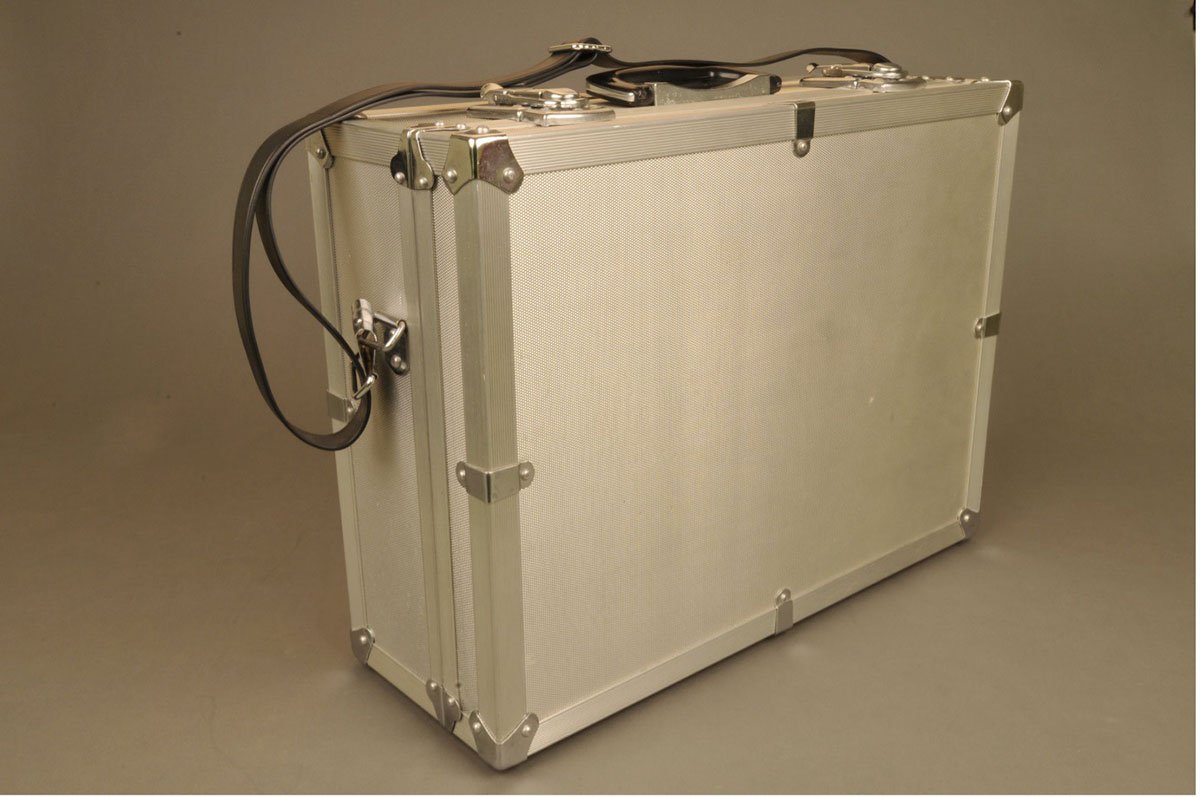Collection Highlights: Brainwave Musical Instrument of David Rosenboom
The earliest known portable brainwave musical instrument, developed by composer David Rosenboom (b. 1947), is one of the gems in the archives of the Bakken Museums. Designed by a pioneer of brainwave music, the device was entitled Portable Gold and Philosophers’ Stones II – after the previous neuromusical pieces of Rosenboom. Commissioned by then the Medtronic Archive, (precursor of the Museum), the “portable gold” is a unique artifact kept in the museum collection up to this day.
Designed for live performance, the Portable Biofeedback Music Device could be used for “wiring” 1 or 2 brainwave performers. Inspired by the Buchla Music Easel, the extraordinary musical instrument, (though looking like a mere suitcase when closed), was conceived as a tool for performing brainwave music anywhere – even on a beach.
Conceptually, the instrument of Rosenboom continued the idea of his piece Portable Gold (Music from Brains in Fours) (1972). Requiring the use of four EEG bands, four amplifiers, a synthesizer, and an electric organ – the composition needed installment of the bulky array of equipment. Most performance settings didn’t allow the use of the sophisticated mediums of brainwave music. While very idea of a composer was making neuromusic available to a greater public of composers and performers, rather than enclosing the demonstrations in the sanitized environment of a science lab. Coming out of necessity to accommodate the brainwave music to various performance settings, the portable instrument encompassed the functioa of many electronic devices and was easy to carry around. Thus, however being a technological artifact, the brainwave musical instrument came out as the next step in the development of Rosenboom’s performance practice.
Finally, let’s say a few words about the development of collaboration between the Medtronic Archive and the composer. Aspired to end up in a brainwave installation, expanding the Vancouver Piece (1973) premiered at Vancouver Art Gallery in Canada, the design of the Portable Biofeedback Music Device was one of several proposals made in 1974 by Rosenboom. A more elaborate, (compared to the previous work), installation offered included a line drawing with alpha waves – incorporating the Alpha-Etch-A-Sketch (1973) developed by Jacqueline Humbert at the Laboratory of Experimental Aesthetics at York University directed by Rosenboom.
Yet, due to the transition of the Archive, established as “The Museum of Electricity in Life at Medtronic” in late 1975, only the Biofeedback Music Device was financially supported and completed in the spring of the same year.
The artifact, (currently not in a functioning condition), is available for researchers on demand. Many schemes for potential renovation, or design of a new portable brainwave musical instrument, are available both at the Bakken Museum and in the Personal Archive of David Rosenboom.
References:
Grayson, J. (1975). Sound sculpture: a collection of essays by artists surveying the techniques, applications, and future directions of sound sculpture. A.R.C. Publications, Vancouver, CA.
Rosenboom, D. (1974). Proposal for a Biofeedback Art Installation for Medtronic Archive. Personal archive of David Rosenboom. Valencia, CA, United States.
Rosenboom, D. (Ed.) (1975) Biofeedback and the Arts: Results of Early Experiments. A.R.C. Publications, Vancouver, CA.
Rosenboom, D. (1975) Brainwave Music. A.R.C. Records, Toronto, CA.
This article was written by: Anastasia Chernysheva, Ph.D. student at University of Illinois Urbana-Champaign. Photo credit: Adrian Fischer, Curator of Exhibits and Collections at Bakken Museum.



